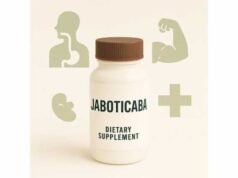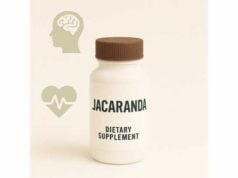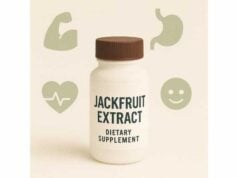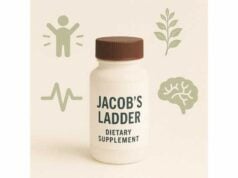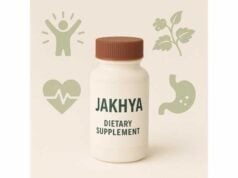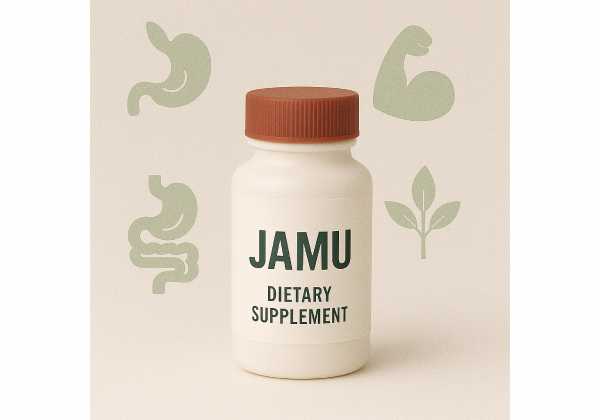
Jamu is Indonesia’s time-honored tradition of herbal tonics—freshly pounded roots, leaves, spices, and fruits simmered, pressed, or blended into functional drinks. Sold from hand-carried baskets (jamu gendong), home kitchens, and modern cafés, jamu recipes range from warming ginger brews to golden turmeric-tamarind blends. While each formula has its own story, most aim at everyday wellness: better digestion, steadier energy, comfortable joints, and immune support. Modern research now explores the bioactive compounds behind these uses—curcumin and xanthorrhizol from turmeric and Javanese turmeric (temulawak), gingerols and shogaols from ginger, polyphenols from tamarind, and fragrant terpenes from lemongrass and galangal. This guide translates that heritage and science into practical advice: which blends fit which goals, how to prepare them safely at home, what standardized supplements correspond to traditional cups, how much to use, who should avoid them, and how to run a simple self-trial without guesswork.
Quick Overview
- Turmeric- and ginger-forward jamu may ease everyday joint discomfort and support digestive comfort over 4–12 weeks.
- Practical home use: 1 cup (250 mL) per serving brewed from 5–10 g total fresh rhizomes; standardized supplement ranges often 250–500 mg (extract) 1–3 times daily.
- Main cautions include gastrointestinal upset and additive effects with glucose- or blood-pressure-lowering drugs; adulterated commercial products are a documented risk.
- Avoid during pregnancy and breastfeeding, in children, and before surgery unless a clinician approves.
Table of Contents
- What is jamu and how it works
- Benefits and what to expect
- How to make and use jamu
- Dosing: how much jamu per day
- Common mistakes and troubleshooting
- Safety, interactions, and who should avoid it
What is jamu and how it works
Jamu is a family of Indonesian herbal drinks prepared for daily well-being rather than as one single medicine. Recipes vary by island, household, and goal, but several blends are widely recognized:
- Kunyit asam (turmeric with tamarind): tangy-spicy, often taken for general resilience, menstrual comfort, and gut ease.
- Beras kencur (rice with aromatic galangal): milky-spiced, favored for appetite and energy in traditional contexts.
- Wedang jahe (ginger infusion): a warming digestif.
- Sinom (young tamarind leaf and spices): refreshing, mildly astringent.
- Temulawak tonics (Javanese turmeric): robust, slightly bitter, traditionally used for appetite and liver-related complaints.
Key constituents (and why they matter):
- Curcumin and related curcuminoids (turmeric), and xanthorrhizol (temulawak) support antioxidant and anti-inflammatory signaling that can influence joint comfort and metabolic markers.
- Gingerols and shogaols (ginger) affect gastric motility and may help with nausea, bloating, and post-meal comfort.
- Tamarind polyphenols add tartness and may contribute to antioxidant capacity and modest lipid effects.
- Lemongrass terpenes (citral, geraniol) bring aroma and mild antimicrobial activity.
- Cinnamon, clove, and sappan wood appear in some formulas, adding polyphenols and color.
How jamu might act in the body (plain language):
- Post-meal comfort: Ginger and turmeric slow inflammatory signaling and support healthy gastric motility, which many people notice as less bloat after meals.
- Joint and muscle ease: Curcuminoids and tamarind seed polyphenols may reduce everyday stiffness, especially when taken consistently with meals.
- Everyday antioxidant support: The pigments and essential oils contribute to the body’s antioxidant defenses—helpful during training blocks, travel, or stressful periods.
- Microbiota-friendly polyphenols: Tannins and phenolics from tamarind, clove, and cinnamon reach the colon, where microbes can transform them into small molecules with systemic effects.
A system, not a single ingredient
Unlike a capsule with one compound, jamu is a matrix: heat, acidity (tamarind), and fats (coconut milk in some regional versions) change what you absorb. That’s part of its appeal—and why two cups from different kitchens can feel different. To evaluate jamu for yourself, pick one blend, standardize your prep, and keep a simple log of what changes.
Benefits and what to expect
Everyday joint comfort and mobility
Blends centered on turmeric, temulawak, ginger, and occasionally tamarind seeds have shown benefits in randomized trials and reviews when used daily for several weeks. People often report easier mornings, smoother warm-ups, and fewer “creaky” transitions after sitting. Effects tend to build over 2–4 weeks, with clearer differences by 8–12 weeks when the same preparation and dosing are kept steady.
Digestive ease and post-meal comfort
Ginger-forward jamu (wedang jahe or turmeric-ginger mixes) commonly helps with meal-related bloating and queasiness. Shorter, gentler simmer times produce a milder cup for sensitive stomachs. Consistency matters: one cup with or after the day’s heaviest meal is a practical starting point.
General wellness and recovery
Antioxidant-rich formulas (turmeric, temulawak, lemongrass, clove, cinnamon) may help the body manage everyday oxidative stress from training, travel, or sleep disruption. The goal here is not an immediate “boost” but steadier day-to-day comfort.
Metabolic and liver-related markers
Temulawak (Curcuma xanthorrhiza) tonics are traditionally used for appetite and liver comfort. Modern research on curcuminoids suggests possible improvements in inflammatory and oxidative stress markers over 8–12 weeks. For people with established medical conditions, these drinks should complement—not replace—clinically guided care and lab monitoring.
What not to expect
Jamu is not a fast painkiller or a cure for chronic disease. In most cases, observed benefits are modest and cumulative, and they’re sensitive to recipe, dose, and habit. Marketing claims that promise an overnight transformation do not reflect real-world experience.
Who tends to benefit most
- Adults with everyday stiffness from desk work or exercise.
- People who prefer food-first options and can drink a consistent cup with meals.
- Those willing to track a simple weekly log (sleep, digestion, stiffness, training notes).
Signals that the recipe works for you
- Mornings feel easier; first steps or first squats are less hesitant.
- Fewer antacid tablets or ginger chews needed after big meals.
- Training sessions recover more predictably across the week.
If you don’t see useful changes by week 8–12, switch blends or stop.
How to make and use jamu
Below are kitchen-tested, practical methods for the most common blends. All amounts are per 1 cup (250 mL) unless noted. Aim for fresh, firm rhizomes and clean water. Wash thoroughly and scrub; peeling is optional if the skins are clean. A blender plus a fine strainer (or nut-milk bag) yields a smooth drink; simmering alone also works.
1) Kunyit asam (turmeric–tamarind)
- You’ll need: Fresh turmeric 5–8 g (or 1–2 tsp ground), ginger 2–4 g (optional), tamarind pulp 5–10 g, a squeeze of lime (optional).
- Method: Rough-slice rhizomes. Simmer in 300 mL water for 10 minutes; add tamarind and simmer 5 minutes more. Cool slightly, blend, then strain, pressing the pulp. Top up to 250 mL.
- Taste and tips: Add ½–1 tsp honey if needed; avoid large sugar doses if metabolic health is a goal. The tamarind’s acidity helps curcuminoids stay in suspension; pairing with a small snack containing fat (e.g., yogurt) may improve absorption.
2) Wedang jahe (ginger infusion)
- You’ll need: Fresh ginger 6–10 g, optional lemongrass 1 stalk (lightly crushed).
- Method: Slice ginger and bruise lemongrass. Simmer 10 minutes, cover, then steep 5 minutes. Strain; drink hot.
- For sensitive stomachs: Use 4–6 g ginger and shorter simmer time.
3) Beras kencur (rice–aromatic galangal)
- You’ll need: Soaked white rice 10 g (about 1 tbsp), aromatic galangal (kencur) 3–5 g, ginger 2–3 g, a small piece of palm sugar.
- Method: Blend with 300 mL water, simmer 10 minutes, strain fine, and serve warm. Texture is lightly creamy from the rice.
4) Temulawak tonic (Javanese turmeric)
- You’ll need: Temulawak 5–8 g, turmeric 3–5 g, ginger 3–5 g.
- Method: Slice, simmer 12–15 minutes, rest covered 5 minutes, strain. Slight bitterness is expected; a slice of lime brightens the cup.
5) Make-ahead concentrate (2–3 days)
- Method: Triple the ingredient amounts, blend after simmering, strain, and bottle in the refrigerator for up to 72 hours. Shake before pouring; natural sediment is normal.
- Do not store at room temperature—these are fresh drinks without preservatives.
Home-use cadence
- Start with 1 cup daily for 3–4 days.
- If tolerated and helpful, move to 1–2 cups daily (for most adults) timed with meals.
- Many people prefer intermittent cycles (e.g., 5 days on, weekends off) to align with shopping and prep.
When to consider standardized supplements
- If fresh ingredients are unavailable or you need consistent dosing, standardized extracts of turmeric/temulawak or ginger can match the daily actives of a typical cup. See dosing guidance below.
Food pairing
- Combine with a small protein-fat snack (yogurt, nuts, eggs) if you notice reflux or queasiness.
- Post-meal walks (10–20 minutes) complement ginger-forward blends for digestion.
Dosing: how much jamu per day
For homemade cups (typical adult use)
- Per serving (250 mL): total fresh rhizomes 5–10 g (e.g., turmeric 5–8 g plus ginger 2–4 g), plus optional spices and tamarind 5–10 g.
- Daily amount: 1–2 cups/day with meals for 8–12 weeks before you judge results.
- Gentle start: If you’re new, begin with ½-strength (shorter simmer, less rhizome) for 3–4 days.
For standardized extracts (capsules/tablets)
- Turmeric/temulawak extracts: 250–500 mg per dose, 1–3 times daily with food.
- Ginger extract: 250–500 mg, 1–3 times daily; for pregnancy and motion nausea, medical guidance is essential—avoid self-dosing.
- Blend products (e.g., tamarind seed plus turmeric): follow labels that specify the exact milligrams per ingredient; aim to stay within the above per-ingredient ranges.
Matching a cup to capsules (rough guide)
- A well-made turmeric-forward cup often corresponds to ~250–500 mg of standardized curcuminoids when taken once or twice daily (bioavailability varies by recipe; the tamarind’s acidity and a fatty snack can help).
- A ginger-forward cup may correspond to 250–500 mg ginger extract.
Trial duration and checkpoints
- Week 2–4: look for early signals (less morning stiffness, calmer post-meal stomach).
- Week 8–12: make your decision—continue, adjust, or stop—based on a simple log (see troubleshooting).
Special situations
- On glucose-lowering or blood-pressure medications: start at the lowest end (one mild cup daily, or 250 mg extract once daily) and add extra at-home checks for 2–3 weeks.
- Sensitive stomach: brew milder cups (shorter simmer), sip with a small snack, or use a lower-dose capsule.
- Training blocks: 1 cup post-workout pairs well with protein and carbs to rehydrate and settle the stomach.
What not to do
- Don’t stack multiple high-dose products (e.g., strong cups plus high-dose capsules) without clinician supervision.
- Don’t sweeten heavily if your goals include metabolic health.
- Don’t rely on jamu to replace prescribed care.
Common mistakes and troubleshooting
1) “I don’t feel anything.”
- Likely cause: inconsistent recipe or too short a trial.
- Fix: use a kitchen scale for rhizomes, keep the same simmer time, and log outcomes for 8–12 weeks. If still flat, switch blends (e.g., from kunyit asam to temulawak-forward) or stop.
2) “My stomach feels off.”
- Likely cause: too concentrated or taken on an empty stomach.
- Fix: shorten simmer time, dilute with hot water, or pair with a small snack. Try ginger-dominant blends first, then layer in turmeric.
3) “The drink separates in the fridge.”
- Normal: pigments and fine fibers settle.
- Fix: shake vigorously; strain through a finer mesh next time. Use within 72 hours.
4) “Is store-bought jamu safe?”
- Concern: some commercial “herbal” products in Southeast Asia have been found adulterated with pharmaceuticals (e.g., steroids, NSAIDs).
- Fix: buy from trustworthy producers who publish batch numbers and testing. When in doubt, make it at home from whole ingredients.
5) “It’s too bitter or too tart.”
- Fix: adjust turmeric:ginger ratio, add a squeeze of lime rather than lots of sugar, or blend in a small piece of pineapple for natural sweetness if your goals allow.
6) “How do I know it’s worth keeping?”
Use a three-line weekly log:
- Mobility: first steps in the morning (0–10).
- Digestion: post-meal comfort (0–10).
- Training/energy: recovery quality (0–10).
If two of three lines trend up by week 8–12 without side effects, you’ve likely found your fit.
7) “I already take turmeric capsules.”
- Note: you can enjoy food-level cups along with low-dose capsules, but avoid stacking high-dose extracts on top of strong cups. Keep total curcuminoid intake in a reasonable range (e.g., 250–1,000 mg/day from supplements unless your clinician advises otherwise).
Safety, interactions, and who should avoid it
Common side effects
- Gastrointestinal: heartburn, nausea, loose stools, or cramping—usually dose-related and improved by taking with food or diluting the cup.
- Headache or lightheadedness: especially if you’re prone to low blood sugar or low blood pressure; monitor if you’re on related medications.
- Mouth or throat irritation: from concentrated ginger or spices; reduce strength and sip warm.
Documented product risks
- Adulteration: certain commercial “herbal” products marketed as jamu have been found to contain hidden drugs such as corticosteroids or NSAIDs, which can cause serious side effects with repeated use. Favor transparent producers and single-ingredient sources, or prepare jamu at home.
Drug and disease interactions
- Glucose-lowering drugs (insulin, sulfonylureas): additive effects may increase hypoglycemia risk. Begin at low intake and add extra checks for 2–3 weeks.
- Antihypertensives and diuretics: mild additional drops in blood pressure are possible; track readings if you’re sensitive.
- Anticoagulants/antiplatelets: turmeric, ginger, and cinnamon provide polyphenols and volatile oils that rarely matter at culinary doses but warrant consistency and clinician awareness at supplemental doses.
- Gallbladder disease or active ulcers: avoid concentrated preparations without medical guidance.
- Liver or kidney conditions: discuss any concentrated extracts with your clinician and monitor labs if advised.
Who should avoid jamu unless a clinician approves
- Pregnant or breastfeeding individuals.
- Children and adolescents.
- People with upcoming surgery or procedures (pause non-essential botanicals 1–2 weeks beforehand).
- Anyone with recurrent hypoglycemia, bleeding disorders, or multiple interacting medications.
Safety checklist
- Start low, go slow; take with meals.
- Choose one blend or supplement and stick with it for 8–12 weeks before judging.
- Log simple weekly outcomes and note any side effects.
- Prefer whole-ingredient, home-prepared drinks or reputable brands that share lot numbers and testing.
- Stop and seek care if you experience severe abdominal pain, persistent vomiting, black stools, unusual bruising, yellowing of skin/eyes, or fainting.
References
- Indonesian traditional herbal drinks: diversity, processing, and health benefits (2025)
- Risk characterisation of constituents present in jamu to promote its safe use (2021) (Systematic Review)
- Efficacy of a proprietary combination of Tamarindus indica seeds and Curcuma longa rhizome extracts in osteoarthritis: a clinical investigation (2023) (RCT)
- Antioxidant and anti-inflammatory effects of curcumin/turmeric supplementation: an updated systematic review and meta-analysis of randomized controlled trials (2023) (Systematic Review)
Disclaimer
This guide is educational and does not replace personalized medical advice, diagnosis, or treatment. Always consult a qualified healthcare professional before starting, stopping, or combining jamu or its constituent supplements—especially if you are pregnant or breastfeeding, have liver, kidney, bleeding, metabolic, or gastrointestinal conditions, take prescription medications, or are preparing for surgery. If you experience alarming symptoms or signs of low blood sugar, stop and seek medical care.
If you found this article useful, please consider sharing it on Facebook, X (formerly Twitter), or any platform you prefer, and follow us for more evidence-based wellness content. Your support helps us continue producing high-quality guides.

